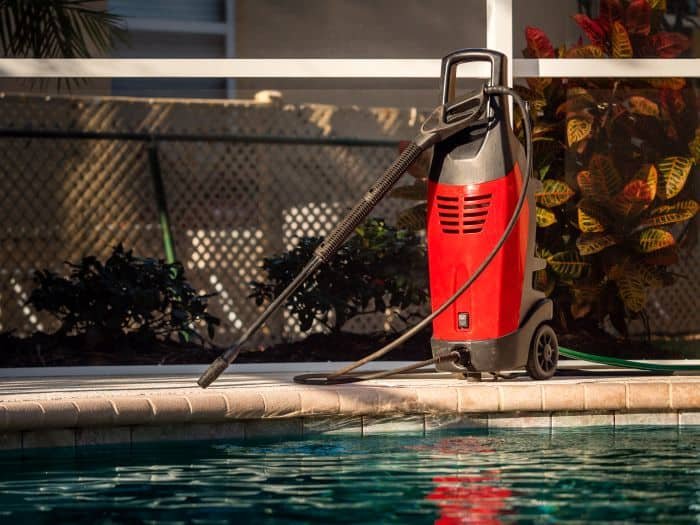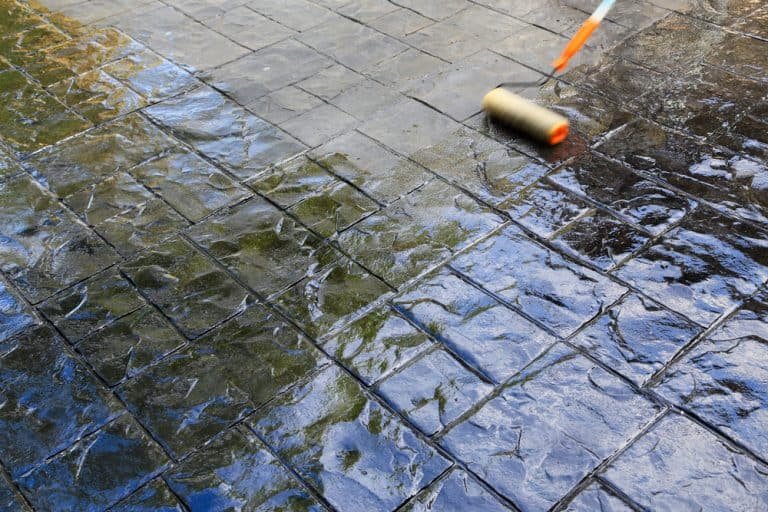How to Clean a Hot Tub That Has Been Sitting
Hot tub maintenance is undoubtedly the least enjoyable part of owning a hot tub. It can be easy to neglect proper care and find yourself with an unusable hot tub. Thankfully, restoring your hot tub to its former glory is a simple process.
Exactly how to clean your hot tub will depend on the design, how long it has been left sitting, and how often it was used before. In general, chrome-shelled tubs can be cleaned more easily than acrylic-shelled tubs. The process may seem lengthy, but it can easily be handled in a single weekend. Keep reading to learn more about caring for your hot tub.
Cleaning Your Hot Tub: The Full Process

While this is a straightforward process, a better understanding the following nine steps involved in properly cleaning your hot tub can save you time and headaches.
- If water has been left sitting in the hot tub for a while, then you’re going to want to drain it all out to remove the bulk of any bacterial growth. Depending on how many gallons is in the hot tub will determine how long this might take. If you drain the water immediately after using your hot tub, it will allow your jets to clear the plumbing more easily later on.
- Next, you’ll want to refill the tub with fresh water. Don’t worry about how quickly the water becomes dirty. You’re going to be draining it again.
- Here’s where you add your cleaner. Add as much as the particular cleaner you’re using instructs, and then turn on your jets. This is usually where the worst of the bacteria sludge builds up, so be prepared for what comes out. You’ll want to run the jets anywhere from an hour to overnight. This will depend on how long bacteria have been congregating in your pipes.
- Once the jets have had time to clear, turn them off and grab your skimmer (if you’ve lost yours, any fine mesh net on a short handle will do). Skim off the gunk layer that’s settled atop the water and then drain the tub again.
- For safety concerns, you’ll want to disconnect the hot tub’s power source. Simply turning it off does not remove the risk of hurting yourself.
- Now for the most challenging part. You’ve got to scrub out the tub. It’s best to use a soft scrub brush and avoid any especially abrasive cleaning products as these can damage the walls of the tub. It can take a fair amount of effort, but you’ll want to be sure to get the tub as clean and dirt-free as possible. Some go as far as to use a pressure washer to remove every bit of residue. While effective, be sure that your tub is strong enough to handle this without damages.
- Allow the tub time to dry. Meanwhile, pull the filter. Under most circumstances, the filter can be rinsed clean with a simple garden hose. If you find that the filter does not clean easily, or if you know that it’s been through more than a year of consistent use, you’ll want to get a replacement.
- Finally, refill the tub with fresh water. Use test strips to check the water’s pH and chlorine levels. It’s best to keep the pH balance around 7.5 to avoid damage to the tub and its occupants. Sodium-dichlor works best for chlorinating hot tubs. Follow the instructions on the package to achieve the proper chlorination level.
- You’re all set to begin enjoying your hot tub as if it were brand new.
Choosing Hot Tub Cleaning Products
Several different hot tub plumbing cleaners can be used with your jets to flush out your pipes. They all have their own unique formulas, and so you should invest in some research before choosing one to use on your hot tub.
There are also many products intended for cleaning the hot tub’s inner shell, including several everyday household items that are effective at cleaning your hot tub:
- The most common is white vinegar, which cleans without the risk of causing any damage. It’s suitable for removing scum and dirt rings.
- Olive oil can be used to loosen any heavy resins or saps that found their way into your tub while you weren’t looking.
- Baking soda can be used as a light abrasive.
- Distilled bleach can be used to clean any persistent stains. Bleach is the most likely to cause damage to the tub and should remain a last resort.
How to Handle Years of Neglect
Maybe you bought a new home that came with an old hot tub, or maybe life got in the way of your relaxation, and suddenly, years have gone by without you filling up your hot tub. In any case, cleaning and restoring a hot tub years after its last use can be done by following the guidelines above, with a few extra considerations.
An outdoor tub that’s been exposed to the elements may have had its wiring compromised. This, unfortunately, is not a problem that you can handle yourself. Only a trained electrician can inspect and ensure the safety of your hot tub’s wiring, so you may want to consider calling one to come in for an inspection.
Once you are sure that it’s safe to do so, you will need to drain and refill the tub, run the jets with a commercial hot tub cleaner, skim any large debris, drain the tub again, scrub out the inside, and possibly clean the filter and add chlorine to the water. Tubs that have been sitting for longer than six months may require additional cleaning.
When you fill-up the tub:
- Watch for any air bubbles or larger leakage indications.
- Test all the jets and ensure they are pumping correctly.
- Drain the tub and allow it to dry.
- Inspect it carefully for any damages. Cracks, mildew, and mold damage in the tub’s shell can turn into costly problems if not repaired properly.
- Take a close look at the rubber seals around the jets and see if there’s any erosion.
An acrylic-shelled tub is more easily damaged than a chrome-shelled tub and requires more gentle cleaning products and methods. Any commercial jet cleaner can be used. While there are many commercial shell cleaners, as we discussed above, many generic household cleaners work just as well.
Most importantly, be patient. It may take several attempts to clear the pipes and scrub out the tub fully.
Keeping Your Hot Tub Clean

After all that effort to restore your hot tub, you’ll no doubt want to keep it in top shape. A few basic routines can help ensure this.
| Daily | Weekly | Monthly | Yearly |
| Run the jets for at least 15 minutes, without any added cleaners. | Drain the tub and wipe it down. | Inspect the jets and their seals for wear and damages. | Repeat the full cleaning process, as described above. |
| Inspect the Tub shell for damages. | Remove and rinse the filter. | Have an electrician inspect the hot tub’s wiring | |
| Clean and secure the hot tub cover. | Test the water’s pH and Chlorine Levels. |
It also helps to understand what causes your hot tub to become dirty or damaged.
Soaking in the tub releases body oils and other organic matter into the water. This can build up in the pipes causing stoppage and damaging the jets. Keeping the filter clean can help to reduce the damage caused by these oils.
Environmental conditions can cause wear on the tub’s shell, cover, and electrical systems. This is less of a concern for indoor hot tubs.
Either of these elements can cause shifts in the water’s chemical balance, requiring the pH and chlorine to be tested often.
Conclusion
Owning and maintaining a hot tub can be a substantial investment of time but well worth it. The amount of work needed to clean a hot tub will ultimately depend on how long it has been neglected, and the environment in which it was left. By following the information provided in this article, you will be able to clean and restore your hot tub and keep it running, no matter how long it has been left sitting unused.





